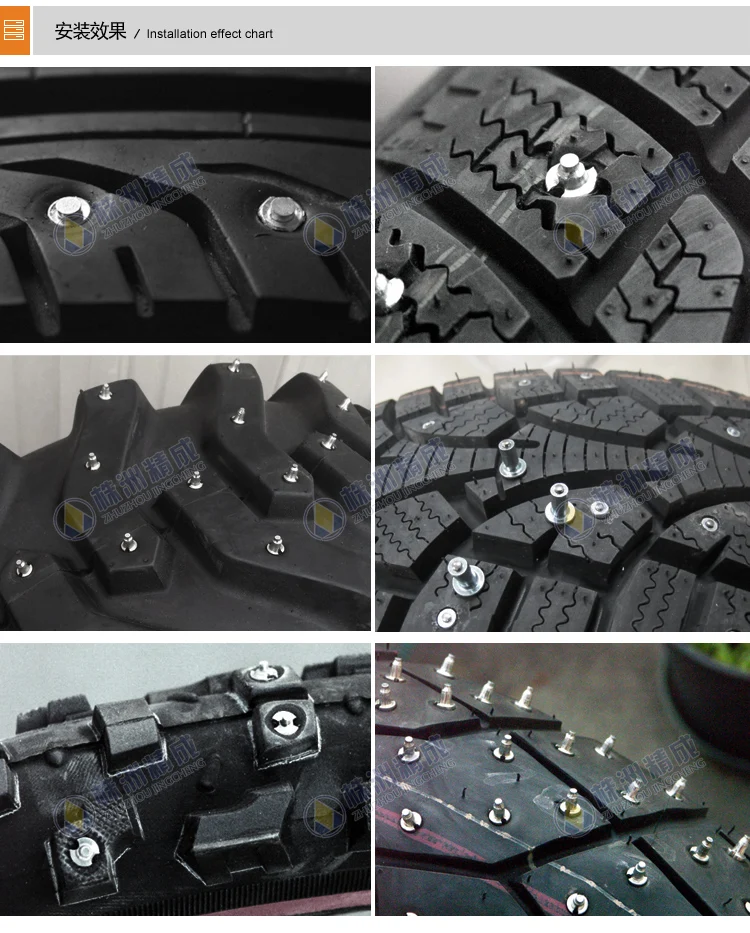Outside's long reads email newsletter features our strongest writing, most ambitious reporting, and award-winning storytelling about the outdoors. Sign up today.
Nowhere does consumer perception lag further behind on-the-ground reality than in the car world. And that’s a problem, because your outdated beliefs, loyalties, and superstitions are probably costing you money and compromising your safety.
We discussed just that last year, when I told you that running winter tires matters way more than buying an all-wheel drive car. But that article had one major flaw: I neglected to explain why studded tires are so vastly inferior to the modern studless alternative. And readers have since indicated that they are actually running studded tires in conditions that don’t merit them. This is my attempt to fix that.
Studs Only Grip IceIf you don’t read any further, the fact that studs only provide additional grip on clear ice is probably the most important takeaway I can give you. Studs themselves are small, sharp metal protrusions installed into the tread of a tire. Because they get between the rubber and whatever surface you’re driving across, they need to be able to poke into that surface and momentarily stick there, resisting lateral forces, in order to provide grip.
Picture other winter surfaces: in packed, loose, or deep snow, the studs will definitely penetrate, but they won’t find the resistance necessary to actually add grip. In slushy or wet conditions or on bare pavement, the tire needs to come into contact with the road surface in order to find traction—and the metal studs actually get in the way of that.
So studs help on bare ice only, do nothing for you in snow, and actually make you less safe in other conditions.
For last year's article on all-wheel-drive versus better tires, I interviewed Woody Rogers, the head of Tire Rack’s testing team. Because Tire Rack is the largest online tire retailer, Rogers tests virtually all makes and models of tires and his job is to be as objective as possible. Tire Rack doesn’t care about selling you a specific tire; they care about selling you the best tire for your needs. “Drivers can’t dictate the surfaces they drive on,” he told me. “They just need a tire that works across all the hazardous conditions they face in winter months.” And that’s not studs.
Tire Rack doesn’t care about selling you a specific tire; they care about selling you the best tire for your needs. “Drivers can’t dictate the surfaces they drive on,” he told me. “They just need a tire that works across all the hazardous conditions they face in winter months.” And that’s not studs.
Back in 2001, Washington State conducted an exhaustive study into the performance of studded tires. One of its most interesting conclusions was that, while studs do grip clear ice very well, they only do so under a very specific set of circumstances.”Studs are most effective on ice at or near 32 degrees F and lose their efficacy as temperatures drop and the ice becomes too hard for the studs to grip or when temperatures rise and ice melts to slush or wet pavement,” the study reads. The minimum effective temperature for studs? Zero degrees Fahrenheit, according to the study.
And that’s a huge problem, because bare ice in those temperature ranges where studs help only exists on roadways for a very small amount of time. In Washington, the study found that conditions where studs work only exist one percent of the time. In Alaska, those conditions occurred just six percent of the time during winter months. In Connecticut, that number is just half a percent. In Ontario, bare ice between zero and 32 degrees accounts for less than two percent of vehicle miles traveled.
In Washington, the study found that conditions where studs work only exist one percent of the time. In Alaska, those conditions occurred just six percent of the time during winter months. In Connecticut, that number is just half a percent. In Ontario, bare ice between zero and 32 degrees accounts for less than two percent of vehicle miles traveled.
Go back to Rogers’s quote above, and you’ll see why having a tire that only works as advertised in such specific, rare circumstances will be problematic. I called him back up for help with this article. “There is absolutely a time and place where a studded tire is a superior solution,” he tells me. “But I don’t know a place in the U.S. where conditions merit studs all winter. So, you have to consider managing the tradeoffs.”
Stopping distances from 25 MPH for Bridgestone Blizzaks (the first modern studless winter tire), compared to those for studded winter tires, and all-seasons on both bare ice and packed snow, at 10 degrees F. (Washington State Transportation Center)Tiny metal spikes don’t grip pavement as well as soft, pliable rubber.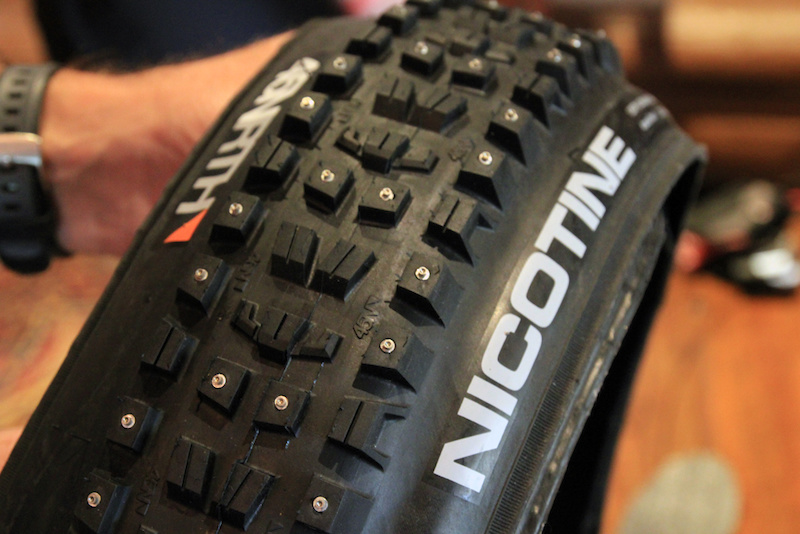 So, by getting between the rubber and the road, studs actually reduce grip, and therefor safety, in slushy, wet, or dry conditions.
So, by getting between the rubber and the road, studs actually reduce grip, and therefor safety, in slushy, wet, or dry conditions.
A study conducted in Alaska in 1994, soon after the advent of modern studless winter tires, compared the braking, acceleration, and cornering performance of studded, studless winter, and all-season tires across packed snow, clear ice, and bare pavement. Studded tires demonstrated some advantage in braking and acceleration on bare ice, were actually out-cornered by studless winter tires, and were demonstrated to reduce grip in all tests on bare pavement. Consider the small fraction of the time in which conditions merit studs and you can see that you are sacrificing grip—and, again, safety—throughout most of the winter.
“There is absolutely a time and place where a studded tire is a superior solution. But I don’t know a place in the U.S. where conditions merit studs all winter. You have to consider the tradeoffs.”
And that's assuming your studs are in good condition. “Think about how much of your driving here in the U.S. is spent on non-snowpack roads,” says Rogers. “And that is wearing at the studs, blunting the sharpness of them, and wearing them down. That takes away some of the traction advantage.”
“Think about how much of your driving here in the U.S. is spent on non-snowpack roads,” says Rogers. “And that is wearing at the studs, blunting the sharpness of them, and wearing them down. That takes away some of the traction advantage.”
How much grip is lost as studs wear? “When stud protrusion diminishes to 0.024 in. (0.6 mm), the frictional effect from the studs becomes negligible,” concludes the Washington study. It found that after just 1,000 miles of driving on bare pavement, the braking distance of studded tires increased by 12 percent.
Studs aren’t the only things that wear when they’re driven on bare pavement. The road surface itself is also torn to pieces. By damaging pavement so significantly, studs actually create a significant amount of pollution, throwing microscopic asphalt and concrete particles into the air. In Japan, concerns about this type of pollution led to the development of moderns studless winter tires in the early 1990s. Studs are now banned in that (very snowy) country.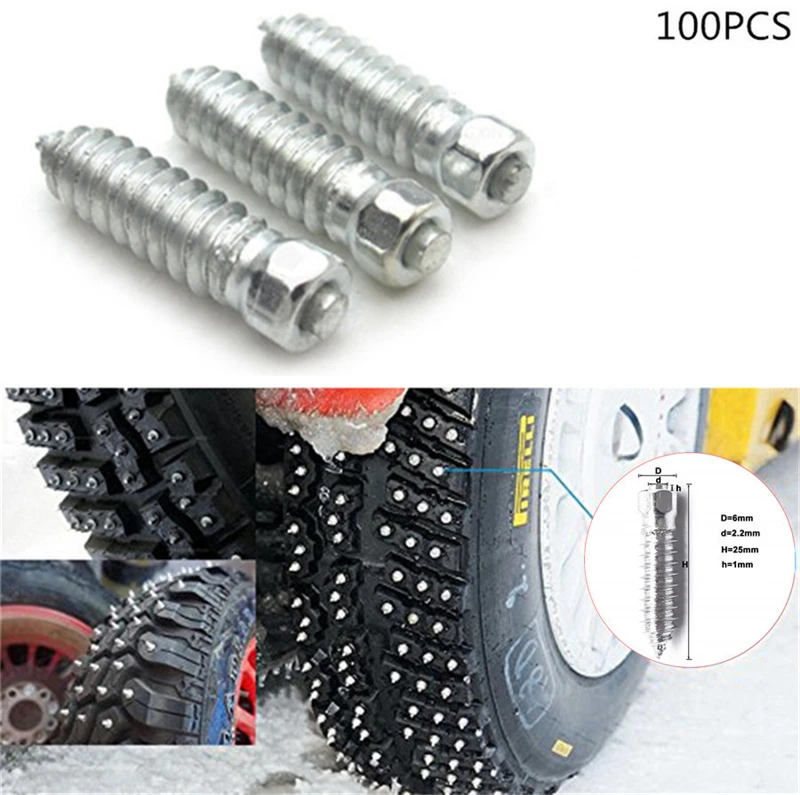
“And then there’s the noise,” says Rogers. “The noise is crazy. I still remember the first time we drove on studded tires as part of a test here, I was in a caravan with other cars, and we had a studded car and a studless car. I was an eighth of a mile behind the studded car, and even with the windows up, I could here the noise from the tires of the car ahead of me.”
All that for a small advantage in one specific circumstance that only accounts for a tiny fraction of the miles you’ll log during the winter?
Stopping distances on bare ice, at different temperatures. (Washington State Transportation Center)Studs Aren’t Great to Drive OnBack in the 2000s, when it was my job to test new cars, I once crashed a Corvette into a bank of frozen snow way up in northern Sweden. Why? Well, because I’m an idiot, obviously. But part of the reason was also due to the unique handling characteristics of studded tires, which I failed to fully account for.
“With a studded tire, what we’ve found particularly during braking and acceleration, is that once the tire spins, the studs cut a groove in the ice,” says Rogers.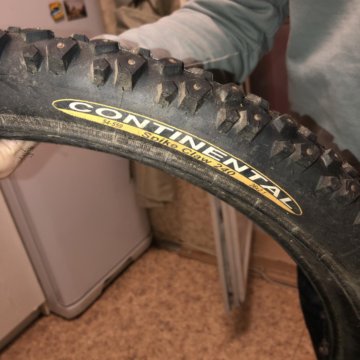 “Then the next stud that comes along behind it comes right through that same groove and has nothing to grab onto.” It only takes about a quarter of a revolution for that effect to take place, and once it occurs, grip disappears instantly.
“Then the next stud that comes along behind it comes right through that same groove and has nothing to grab onto.” It only takes about a quarter of a revolution for that effect to take place, and once it occurs, grip disappears instantly.
“That leads to what you felt in the Corvette,” Rogers tells me. “Grip, grip, grip, grip, grip, then whoops—who pulled the rug out?”
Even if you’re not lapping a car around a race track carved onto a frozen lake, this lack of communication from studded tires could impair your ability to drive safely in winter conditions. Whereas studless tires lose their grip progressively, communicating to the driver that they’re nearing the limits of available grip, studded tires lose grip suddenly, without warning. You won’t know you’re driving too fast for the conditions until you end up in a ditch.
Do You Need Studded Tires?The simple answer is that studs are an outdated technology that's no longer relevant in the vast majority of driving conditions.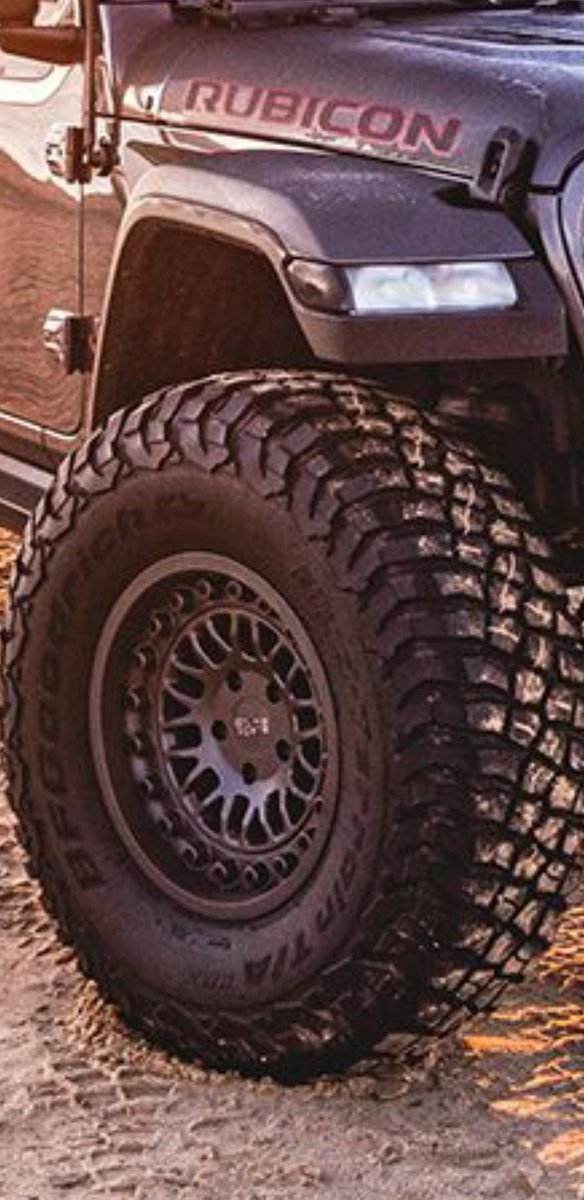
“The traction of studded tires is slightly superior to studless tires only under an ever-narrowing set of circumstances,” the Washington study concluded—way back in 2001. “With…the advent of the new studless tire, such as the Blizzak, since the early 1990s, the traction benefit for studded tires is primarily evident on clear ice near the freezing mark, a condition whose occurrence is limited. For the majority of test results reviewed for snow, and for ice at lower temperatures, studded tires performed as well as or worse than the Blizzak tire. For those conditions in which studded tires provided better traction than studless tires, the increment usually was small.”
This winter, will you drive in extreme cold? Will you drive on snow? Will you encounter bare, plowed highways? Winter driving is defined by its unpredictability. Fortunately for all of us, there is a device designed to deal with all of it: The modern studless winter tire.
Never operate tire studding or other equipment without proper safety equipment.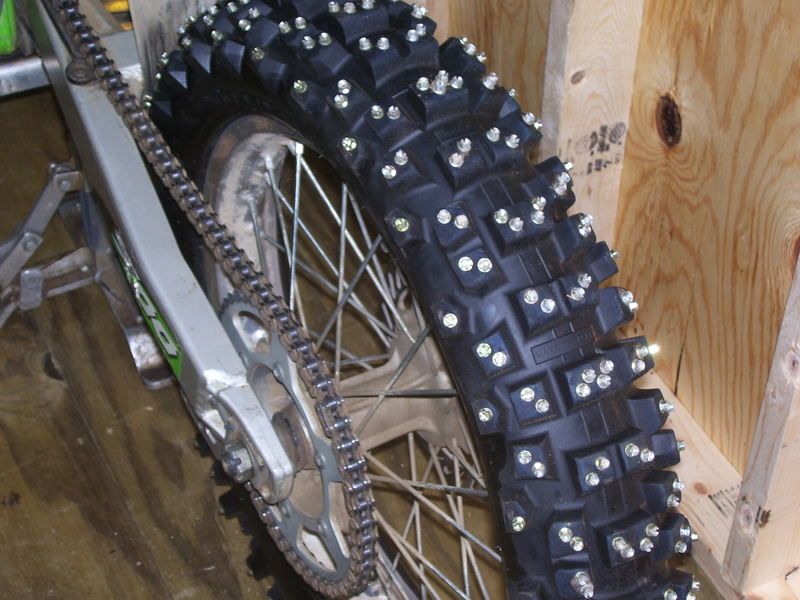 Shop approved safety glasses and work gloves should always be used for your own protection.
Shop approved safety glasses and work gloves should always be used for your own protection.
The stud gun will automatically return to the start position leaving the tire stud in the tire.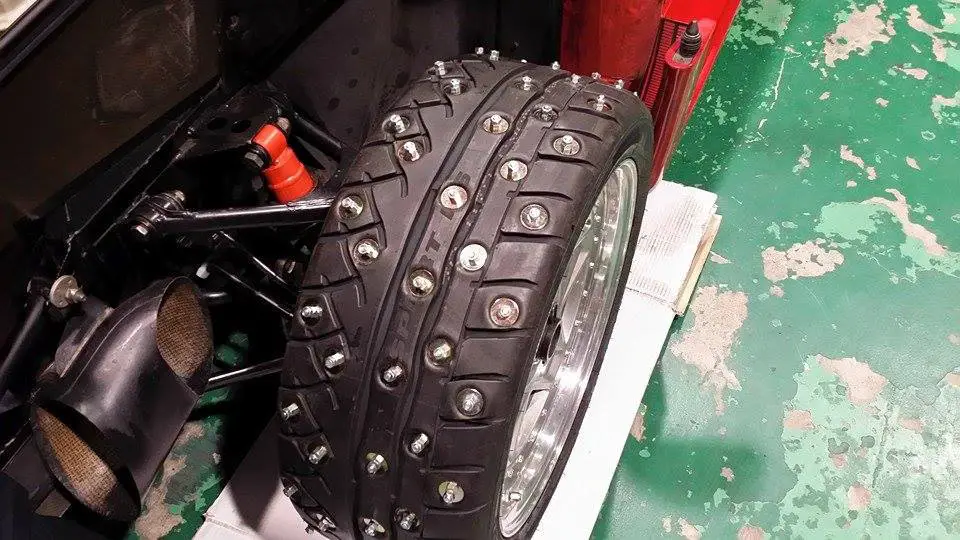 The timing of steps 4, 5 and 6 are important and take some time to learn.
The timing of steps 4, 5 and 6 are important and take some time to learn.
Helpful Hints and Recommendations
Properly and Improperly Installed Studs
Advise the customer that the studded tires require a break-in period. The customer should drive normally (try to avoid hard cornering, acceleration and braking) for a few days or so (approx. 50-100 miles) to allow for proper tire stud seating.
How to Video: TSIT-9 Stud Insertion Tool
How to Video: Stud removal
How to Video: K500 Stud Insertion Tool
How to Video: TSIT-9 Repair Video
when driving on ice. In fact, not every spike is really capable of clinging to ice. Only the driver of the car is usually unaware of this.
Maxim Stroker
Few of the huge army of urban drivers who prefer studded winter tires truly realize that they do not receive any tangible advantages from their choice.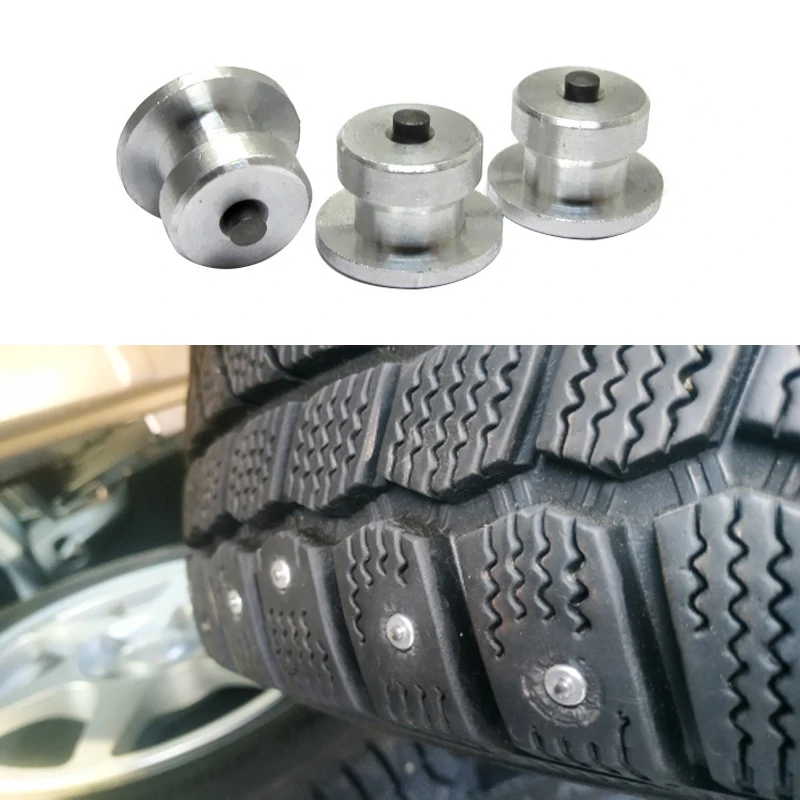 The appearance of rubber, showing even rows of spikes firmly seated in their nests, says absolutely nothing about its effectiveness on real ice.
The appearance of rubber, showing even rows of spikes firmly seated in their nests, says absolutely nothing about its effectiveness on real ice.
The fact is that metal spikes tend not only to fly out of the wheel, but also to wear off, remaining in their place. And with a “competent” approach, it is possible to turn the spikes of your rubber into props in just a couple of winter seasons. For example, if you live in a big city and like to get through on clean asphalt, or often “dangle” in winter for long distances along the highway. Studs are no less worn out on a car driven by a driver whose driving style includes frequent and sharp braking and acceleration: wheel slip on a hard surface also contributes to the accelerated grinding of studs on asphalt. Well, the third reason for blunting spikes is savings when buying a wheel. Budget tires are equipped with no less budget spikes made of cheap soft metal.
But whatever the reasons for the loss of their sharpness and, accordingly, "tenacity", the result is the same - they cease to cope with their main task - keeping the car on an icy road.
slavicfamily.org
The car starts to pull off the trajectory in turns, the braking distance increases. In fact, studded tires with worn studs turn into an analogue of a mediocre or heavily worn Velcro. Moreover, the most unpleasant moment in such a situation is that the driver driving a car with such a “spike” does not even suspect that it is actually substandard. Being deceived, he chooses the speed mode “not on rubber”, and allows himself to reduce the distance to the vehicle in front to very risky distances.
All this sooner or later leads to an accident, like any self-confidence on the road. It’s sad, but when you find that the spikes in the wheels have worn out, it’s almost impossible to do anything about it. Studding a wheel again is completely unjustified from a financial point of view - compared to buying new rubber.
There are actually only two exits. The first is to purchase a new set of studded wheels and, having learned from bitter experience, move on them on asphalt at speeds not exceeding 100 km / h, avoiding sudden acceleration and braking. The second option is to pick out all the studs so that they do not lengthen the braking distance on the pavement, and use the ex-studded stud like ordinary non-studded winter wheels.
We consider the differences of the “Sports” version of the SUV
57583
We consider the differences of the “Sports” version of the SUV
9000 57583 Avtovzglyad:wheels, summer tires, tires, wheels, winter tires, tire service
The tires used, as well as their condition, have a significant impact on road safety and driving comfort. As you know, in slippery winter roads, the number of accidents increases many times. Protect yourself, passengers and cars will allow special winter tires.
Rules for the operation of studded tires
Many car owners prefer the studded version, changing their shoes with the onset of the first cold weather.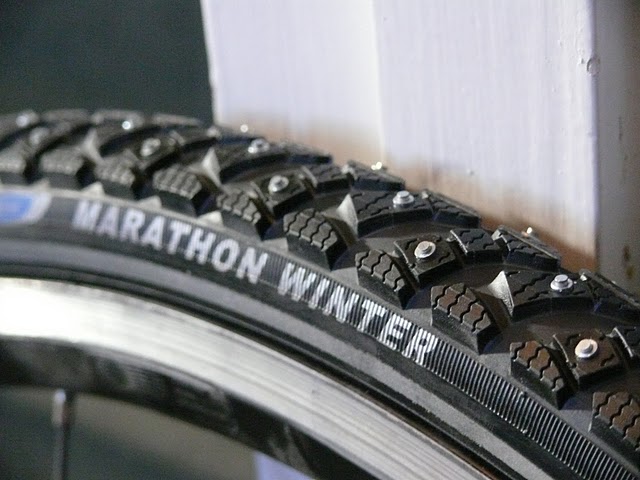 However, it often turns out that the life of winter studded tires is short - a new set can hardly withstand a couple of seasons, and instead of confidence and good handling, the motorist gets additional problems in the form of noise, instability, increased fuel consumption, risk and additional considerable costs.
However, it often turns out that the life of winter studded tires is short - a new set can hardly withstand a couple of seasons, and instead of confidence and good handling, the motorist gets additional problems in the form of noise, instability, increased fuel consumption, risk and additional considerable costs.
What is the reason? many will ask. The answer is simple - the rules for the operation of studded tires are violated.
Studded tires, proposed as a safety measure when driving in the cold season, have become quite widespread, and to this day they compete with frictional winter options. The principle of operation is simple - thanks to the metal spikes, the tire must securely “hold on” to a slippery road, breaking through ice and a layer of rolled snow.
Studded tires operating conditions
In large cities such as Moscow, the roads are usually cleared, which does not allow studded tires to grip the road reliably. In the absence of snow and wet weather, which is not uncommon in our latitudes, water is poorly drained from under the wheels due to the resulting gap. When braking hard, entering a turn or accelerating, a "skating" effect may occur.
In the absence of snow and wet weather, which is not uncommon in our latitudes, water is poorly drained from under the wheels due to the resulting gap. When braking hard, entering a turn or accelerating, a "skating" effect may occur.
The operation of winter studded tires in Orekhovo-Zuevo and other relatively small settlements with often snowy roads also does not bring due satisfaction. The reason is that studded tires are not designed for the entire cold period, but only for a certain temperature regime and road conditions.
Before purchasing and installing such tires, you should read the manufacturer's recommendations or read the information on the topic "Studded tires: operating conditions":

The normal service life of studded tires can reach several seasons or an average of 50 thousand kilometers in the required weather conditions. Lack of soft snow and ice, slush, water, or, conversely, too much frost or clean, dry asphalt shorten the life of studded tires:
 The loss of a third of the studs makes driving on such tires unsafe.
The loss of a third of the studs makes driving on such tires unsafe. Operation of winter studded tires in Orekhovo-Zuyevo
Certain rules for the use of studded tires are established:
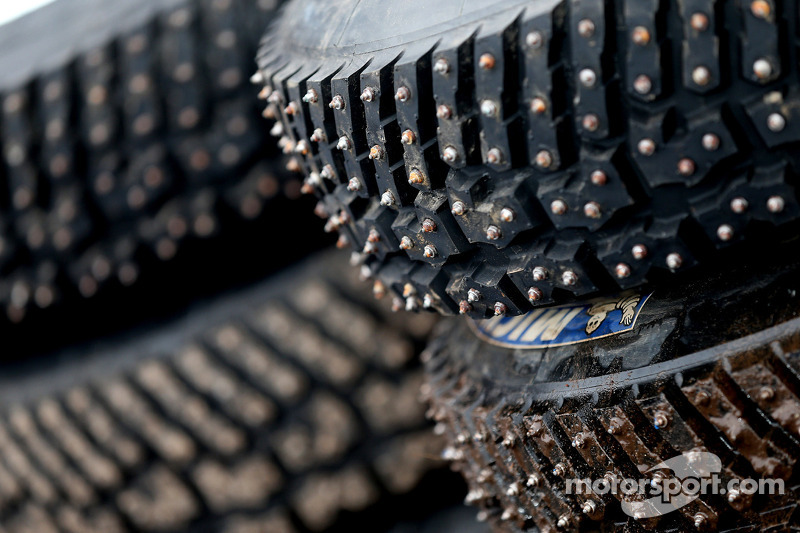 A car with studs on an icy or snowy road stops much faster, and other road users should be warned of this fact in order to prevent accidents.
A car with studs on an icy or snowy road stops much faster, and other road users should be warned of this fact in order to prevent accidents. 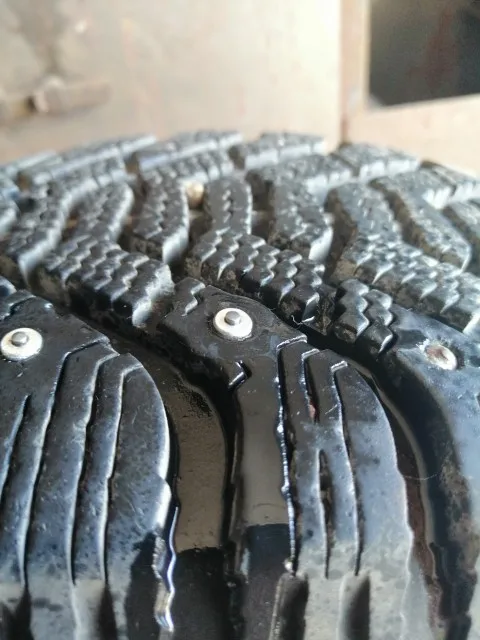 In addition, an uneven load on the axle is created, which negatively affects the technical condition of the car.
In addition, an uneven load on the axle is created, which negatively affects the technical condition of the car. Service life of studded tires
Especially to make it easy for you to choose the right tires for your car, we have developed the most convenient form of tire selection.